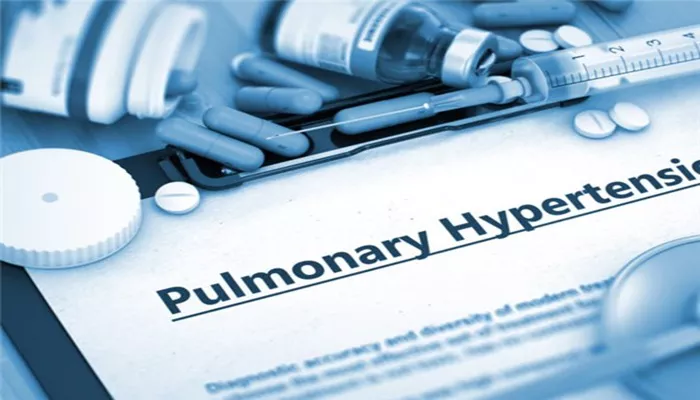Pulmonary hypertension (PH) is a serious cardiovascular condition characterized by elevated blood pressure in the pulmonary arteries. These arteries carry blood from the heart to the lungs. When pressure in these vessels rises, the heart must work harder to pump blood, which can lead to heart failure and other complications if untreated.
PH is not a single disease but a group of disorders with different causes and treatment strategies. For clinical and research purposes, pulmonary hypertension is classified into five distinct classes based on the cause, pathology, and clinical presentation. Understanding these classes is crucial for accurate diagnosis, management, and prognosis of patients.
The 5 Classes of Pulmonary Hypertension
Class 1: Pulmonary Arterial Hypertension (PAH)
Class 1 pulmonary hypertension, also known as pulmonary arterial hypertension (PAH), involves the narrowing, thickening, or stiffening of the small pulmonary arteries. This leads to increased resistance against blood flow and consequently elevated pulmonary arterial pressure.
Etiology: PAH can be idiopathic (unknown cause), heritable, or associated with other conditions such as connective tissue diseases (e.g., scleroderma), congenital heart disease, HIV infection, portal hypertension, or drug/toxin exposure.
Pathophysiology: The hallmark of PAH is remodeling of the pulmonary arterial wall. This includes proliferation of endothelial cells, smooth muscle hypertrophy, inflammation, and fibrosis. These changes narrow the vessel lumen and increase pulmonary vascular resistance.
Clinical Features: Patients often present with exertional dyspnea, fatigue, chest pain, syncope, and signs of right heart failure such as peripheral edema and ascites.
Diagnosis: Confirmed by right heart catheterization showing a mean pulmonary artery pressure (mPAP) ≥ 20 mmHg at rest, pulmonary vascular resistance (PVR) > 3 Wood units, and pulmonary artery wedge pressure (PAWP) ≤ 15 mmHg.
Treatment: Management includes use of vasodilators such as endothelin receptor antagonists, phosphodiesterase-5 inhibitors, prostacyclin analogues, and in some cases, lung transplantation.
Class 2: Pulmonary Hypertension Due to Left Heart Disease
Class 2 PH arises as a consequence of diseases affecting the left side of the heart, causing increased left atrial pressure that backs up into the pulmonary circulation.
Etiology: Common causes include left ventricular systolic or diastolic dysfunction, valvular heart diseases (especially mitral stenosis and mitral regurgitation), and left atrial myopathy.
Pathophysiology: Elevated left heart pressures increase pulmonary venous pressure, leading to passive pulmonary hypertension. Chronic pressure elevation causes vascular remodeling and increased pulmonary arterial pressure.
Clinical Features: Symptoms reflect both pulmonary hypertension and left heart failure, including shortness of breath, orthopnea, paroxysmal nocturnal dyspnea, and lower extremity swelling.
Diagnosis: Right heart catheterization reveals elevated mPAP ≥ 20 mmHg with PAWP > 15 mmHg, distinguishing it from PAH. Echocardiography is often used to identify left heart dysfunction.
Treatment: Focuses on managing the underlying left heart disease through medical therapy (e.g., diuretics, ACE inhibitors, beta-blockers), surgical correction of valve disease, or device therapy (e.g., cardiac resynchronization).
Class 3: Pulmonary Hypertension Due to Lung Diseases and/or Hypoxia
This class of PH is caused by chronic lung diseases or conditions resulting in low oxygen levels (hypoxia), which induce pulmonary vasoconstriction and vascular remodeling.
Etiology: Includes chronic obstructive pulmonary disease (COPD), interstitial lung diseases (e.g., pulmonary fibrosis), sleep-disordered breathing (such as obstructive sleep apnea), and chronic exposure to high altitude.
Pathophysiology: Hypoxia triggers vasoconstriction of pulmonary arteries to divert blood flow to better-ventilated lung areas. Persistent hypoxia leads to vascular remodeling and increased pulmonary vascular resistance.
Clinical Features: Patients often have symptoms of underlying lung disease alongside exertional dyspnea and fatigue. Signs of right heart strain may develop in advanced disease.
Diagnosis: Identified through clinical history, pulmonary function tests, imaging, and right heart catheterization showing PH with evidence of lung disease or hypoxia.
Treatment: Primarily targets the lung disease and improving oxygenation, including supplemental oxygen, smoking cessation, pulmonary rehabilitation, and sometimes lung transplantation. PAH-specific therapies are generally not recommended unless PH is severe and disproportionate.
Class 4: Chronic Thromboembolic Pulmonary Hypertension (CTEPH)
Class 4 PH results from unresolved blood clots in the pulmonary arteries that cause mechanical obstruction and secondary pulmonary hypertension.
Etiology: It occurs after acute pulmonary embolism fails to resolve completely, leading to organized thrombi that narrow or block pulmonary arteries. Risk factors include deep vein thrombosis, thrombophilia, and prior venous thromboembolism.
Pathophysiology: Persistent thromboembolic obstruction increases pulmonary vascular resistance. Over time, secondary microvascular remodeling develops, further worsening PH.
Clinical Features: Symptoms include progressive exertional dyspnea, fatigue, syncope, and right heart failure signs. Unlike other classes, there may be a history of prior embolic events.
Diagnosis: Ventilation/perfusion (V/Q) scan is the screening test of choice showing mismatched perfusion defects. Confirmed by pulmonary angiography and right heart catheterization.
Treatment: Surgical pulmonary endarterectomy is the definitive treatment for operable disease. For inoperable cases, medical therapy with riociguat and balloon pulmonary angioplasty are options.
Class 5: Pulmonary Hypertension with Unclear or Multifactorial Mechanisms
Class 5 includes PH caused by heterogeneous and complex conditions where multiple mechanisms contribute to the elevated pulmonary pressure.
Etiology: This category covers a variety of disorders including hematologic diseases (e.g., myeloproliferative disorders), systemic metabolic disorders (e.g., sarcoidosis), chronic kidney disease, and complex congenital heart diseases.
Pathophysiology: Diverse mechanisms such as vascular obstruction, inflammation, metabolic derangements, and high cardiac output states contribute variably to PH.
Clinical Features: Presentation varies widely depending on the underlying condition but generally includes symptoms of PH such as dyspnea and signs of right heart strain.
Diagnosis: Requires comprehensive evaluation of the underlying systemic disease combined with right heart catheterization to confirm PH.
Treatment: Focuses on managing the primary systemic disorder. PH-specific therapies may be considered on a case-by-case basis but evidence is limited.
Conclusion
Pulmonary hypertension is a complex syndrome with multiple causes. Accurate classification into one of the five classes is essential for optimal patient care. Each class differs in its pathophysiology, clinical features, and treatment options.
Cardiologists, pulmonologists, and multidisciplinary teams should work together for comprehensive diagnosis and personalized therapy. Early detection and targeted treatment improve quality of life and survival in patients with pulmonary hypertension.
Related topics:


